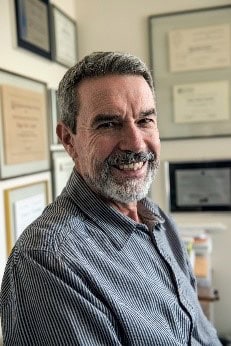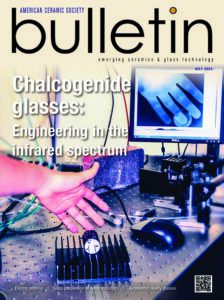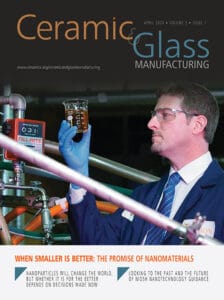
Title: Unlocking crystal nucleation in supercooled liquids and glasses
Edgar Dutra Zanotto
Department of Materials Engineering
Center for Research, Technology and Education in Vitreous Materials (CeRTEV)
Federal University of São Carlos, Brazil
www.certev.ufscar.br e-mail: dedz@ufscar.br
Modern glass science defines the glassy state through three key features: structure, relaxation, and crystallization. Understanding how materials vitrify or avoid crystallization requires examining dynamic processes like relaxation and crystallization. Crystallization is the nemesis of vitrification, however, controlled nano or micro-crystallization allows the creation of valuable polycrystalline glass-ceramics. This centrality in hindering and harnessing crystallization makes it the most cited keyword in glass science history.
This lecture focuses on the early stages of crystallization, with a nod to relaxation processes. We will delve into the significant progress made in understanding crystal nucleation in supercooled liquids and glasses, where relaxation plays a critical role. The Classical
Nucleation Theory (CNT), the workhorse for analyzing crystallization dynamics
for over 70 years, has limitations. Experimental data reveals significant discrepancies between CNT predictions and observed nucleation rates and their temperature dependence in various glass formers, including metallic, organic, and oxide materials. However, recent MD simulations using simpler models (such as Lennard-Jones, BaS, ZnSe, Ge, Ni, and H2O) have successfully validated CNT and uncovered intriguing connections between crystal nucleation and dynamic heterogeneities within the material. Short videos will be used to enhance the presentation.
Bio: Edgar Dutra Zanotto is a passionate researcher in glass science and engineering, dedicating over 47 years to education, discovery and invention. He serves as a professor at the Federal University of São Carlos, Brazil, and the Director of the Center for Research, Technology and Education in Vitreous Materials – www.certev.ufscar.br.
Zanotto’s research delves into the fundamental behaviors of glass-forming materials, encompassing diffusion, viscous flow, relaxation, and crystallization. He further explores the development, properties, and applications of technological glasses and glass-ceramics. His prolific career has yielded approximately 450 scientific articles in journals and conference proceedings, plus several book chapters and patents. He has fostered research through approximately 100 contracts with government agencies and 40 with industries. He has supervised over 100 “diploma” students and 100 post-graduate students and post-docs. His expertise has been shared through over 400 congress presentations, including 160 invited lectures and 40 plenary talks at national and international conferences.
Zanotto’s contributions have been acknowledged with 59 science and technology awards. He holds memberships in esteemed academies worldwide, including the São Paulo Academy of Sciences, Brazilian Academy of Sciences, National Academy of Engineering, World Academy of Ceramics (WAC), and The World Academy of Sciences (TWAS). He is a distinguished Fellow of the Fulbright Foundation, the American Ceramic Society, the Society of Glass Technology, and the Brazilian Ceramic Society. His leadership extends beyond research. He serves as an editor for the Journal of Non-Crystalline Solids and sits on the advisory boards of ten other scientific journals, actively shaping the discourse in glass physics and materials science.
Subscribe to Ceramic Tech Today

Don’t miss the latest ceramic and glass materials news. Receive the CTT newsletter to your email three times a week by subscribing at this link.
Subscribe to Ceramic & Glass Manufacturing Weekly

Don’t miss the latest ceramic and glass business news. Receive the C&GM Weekly newsletter to your email every Monday by subscribing at this link.


